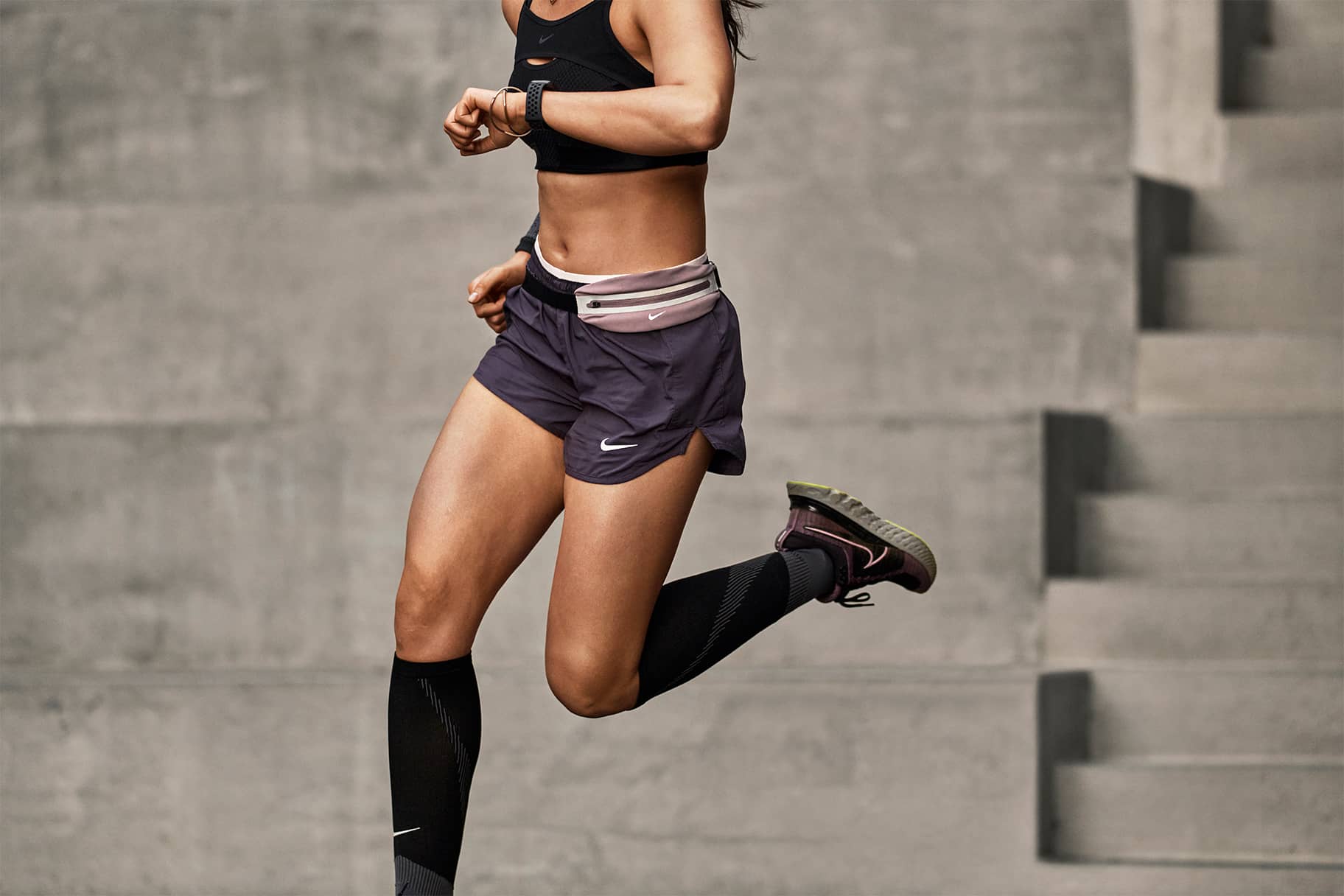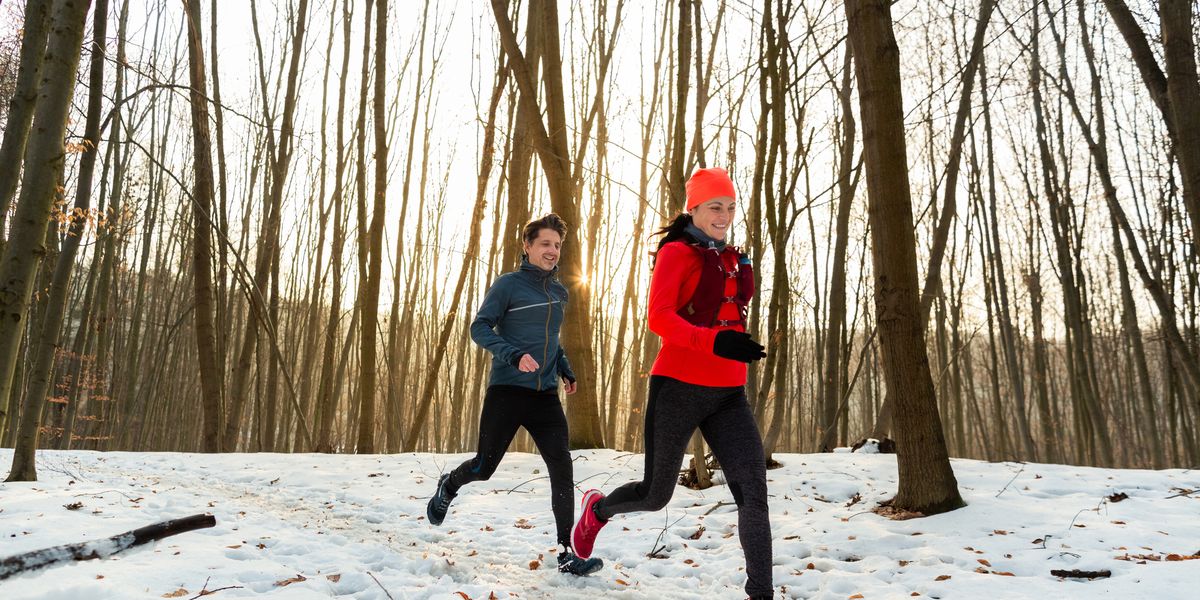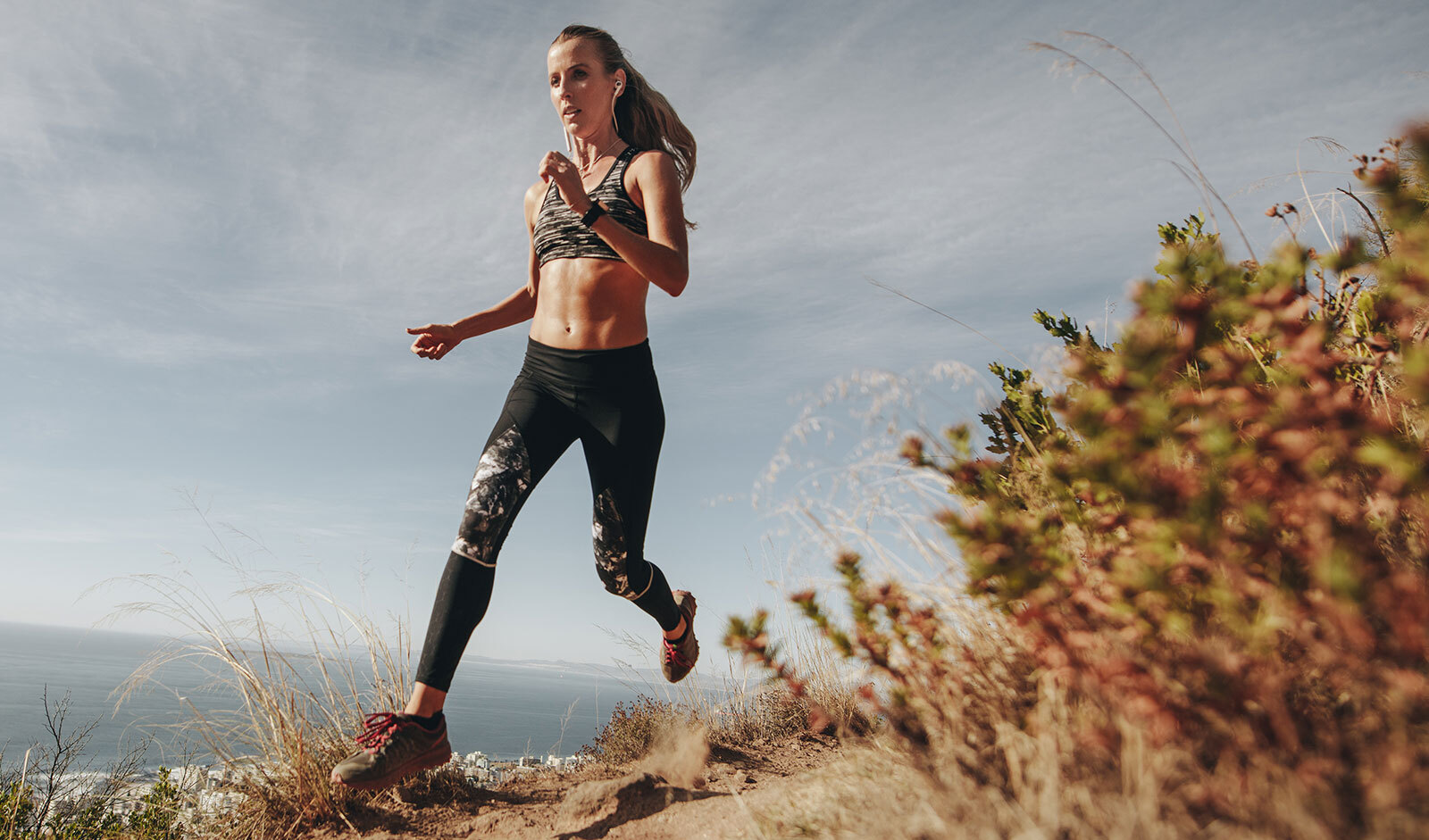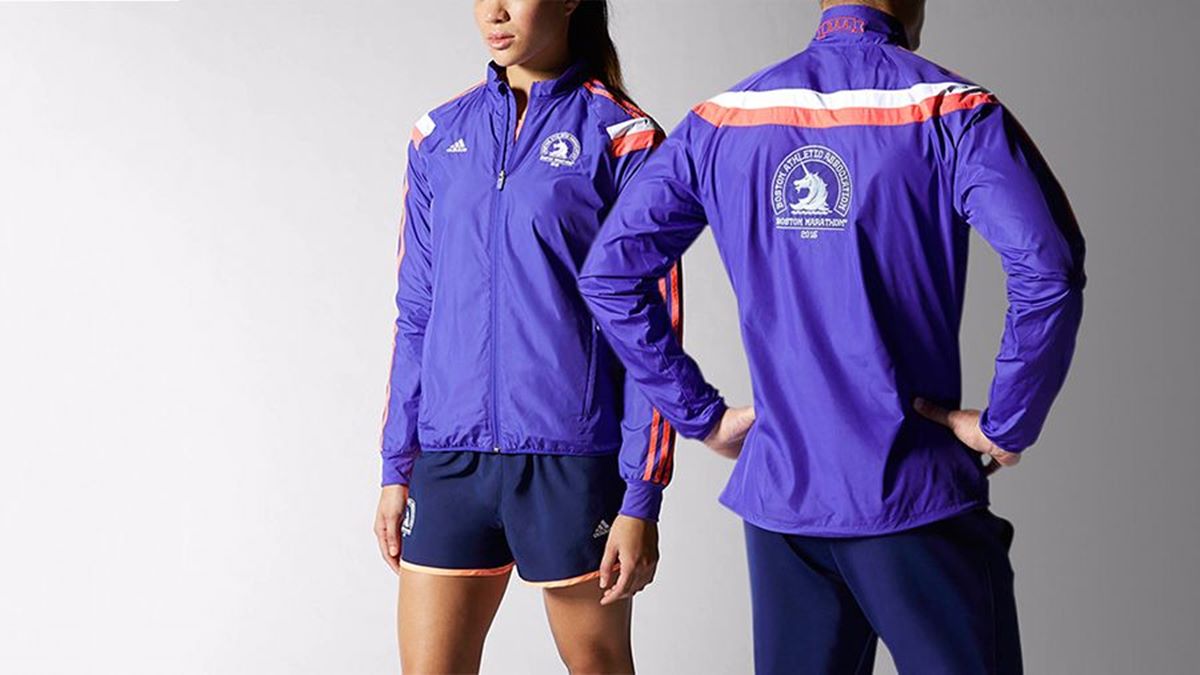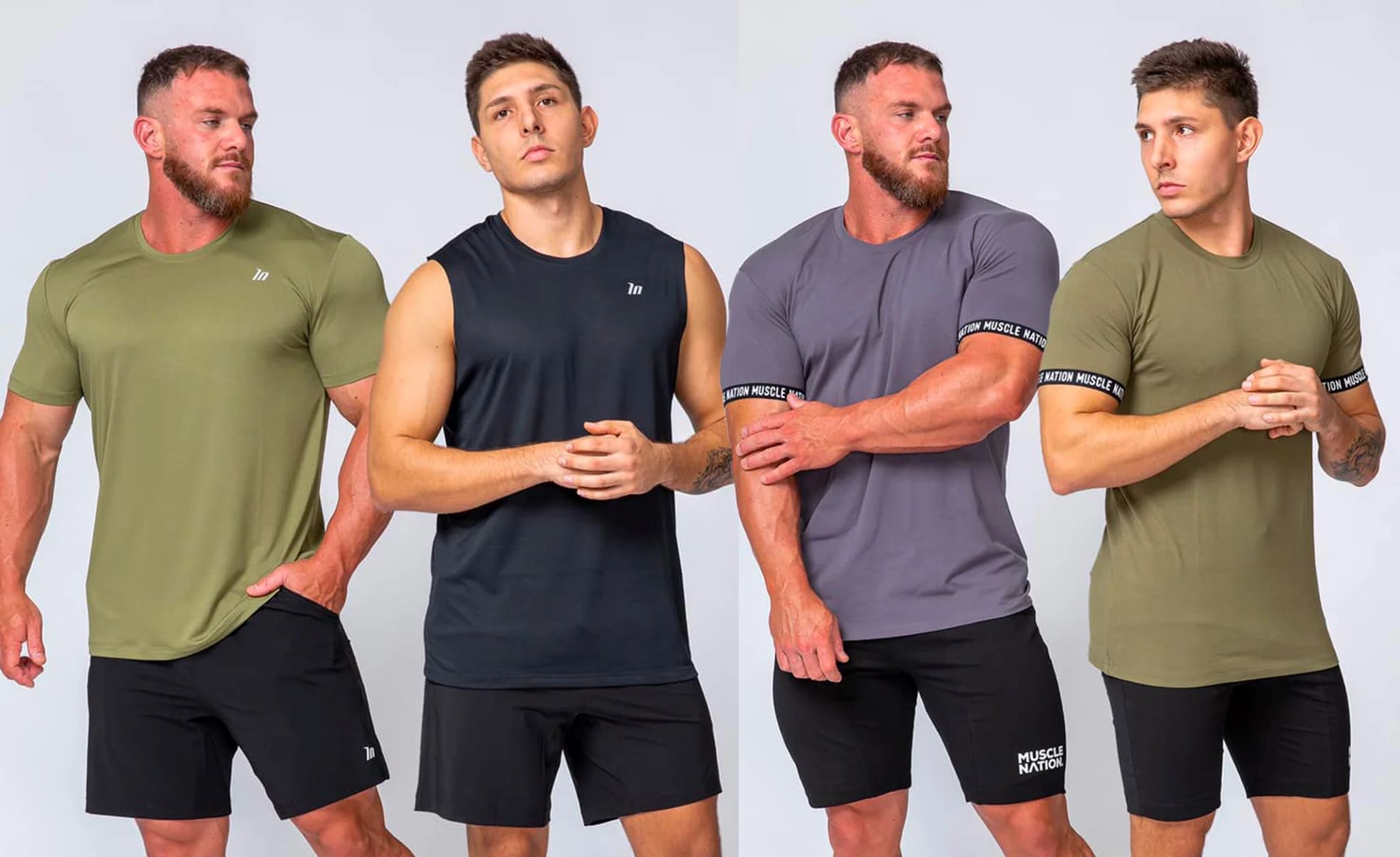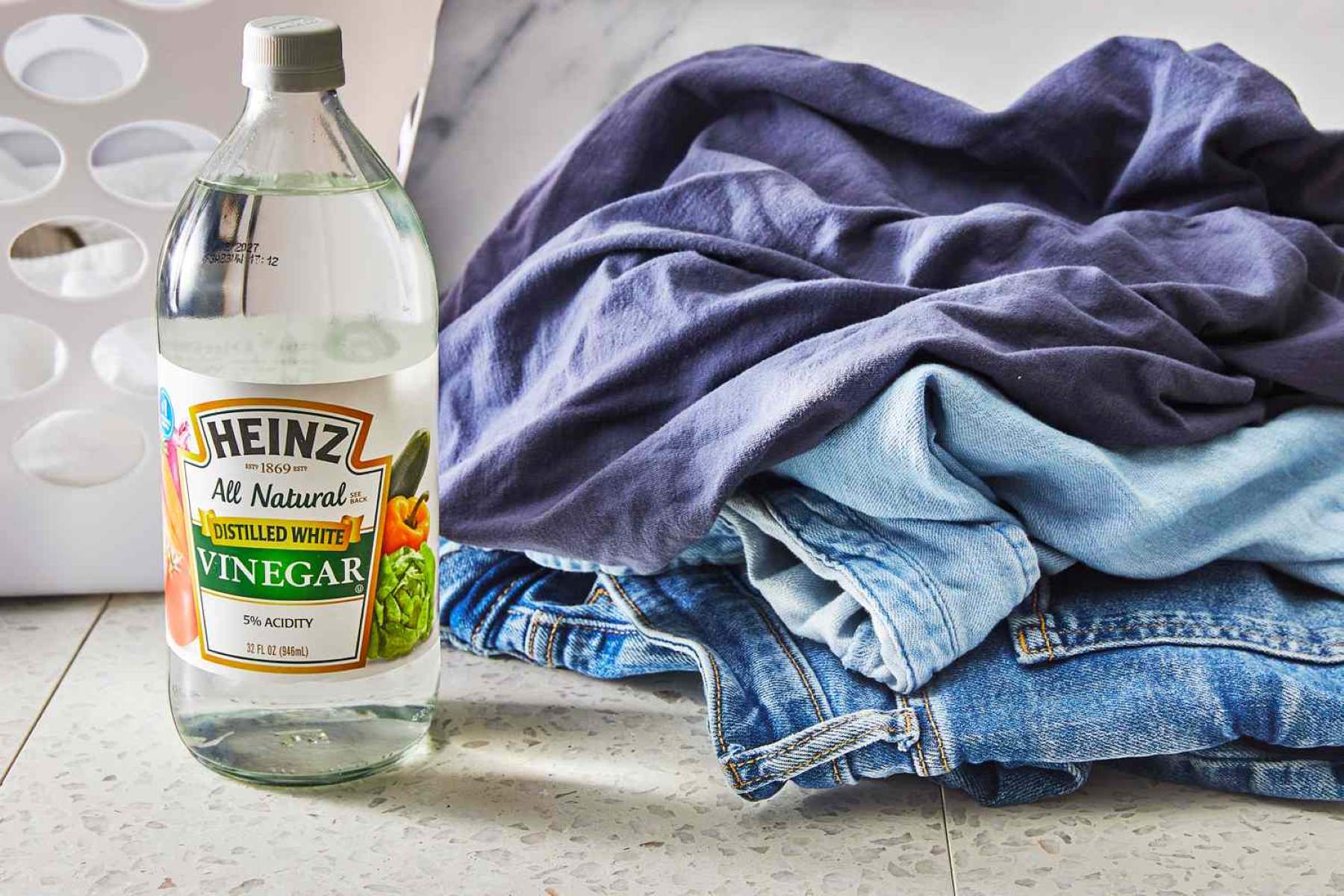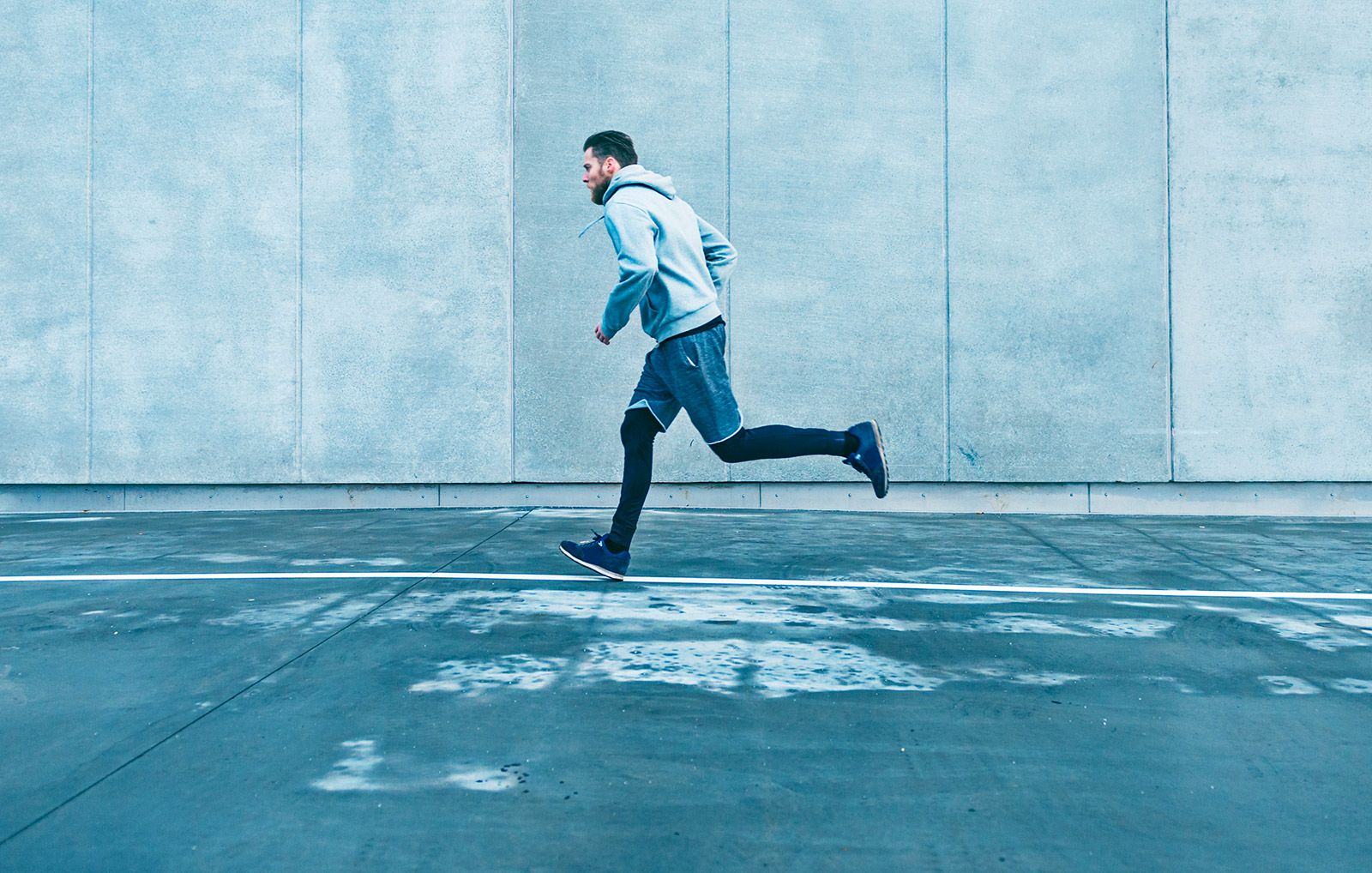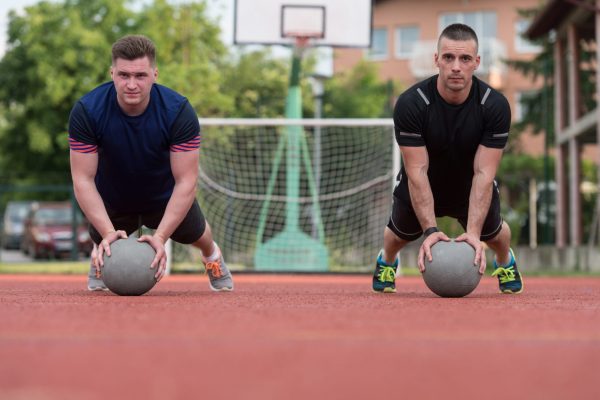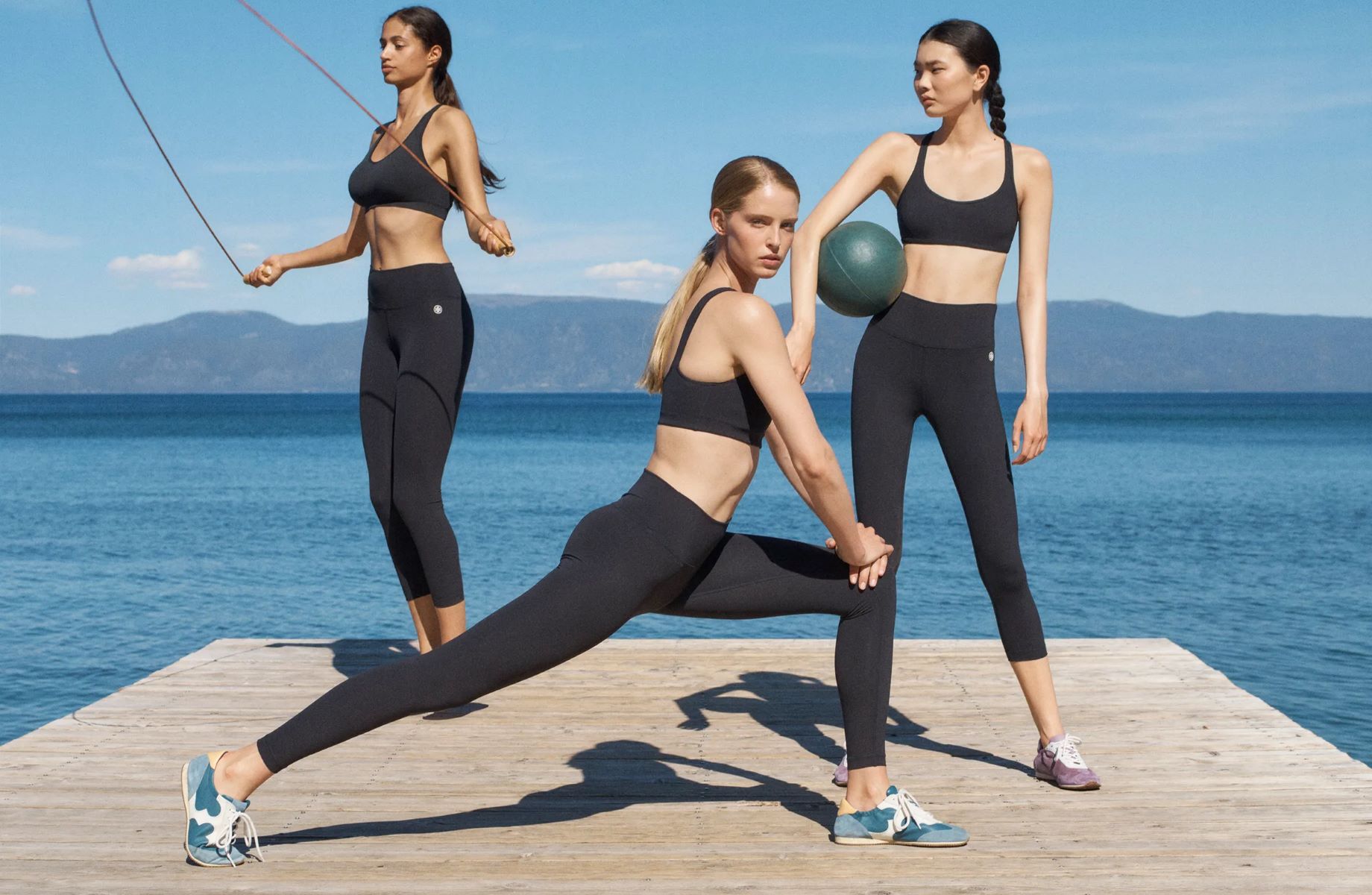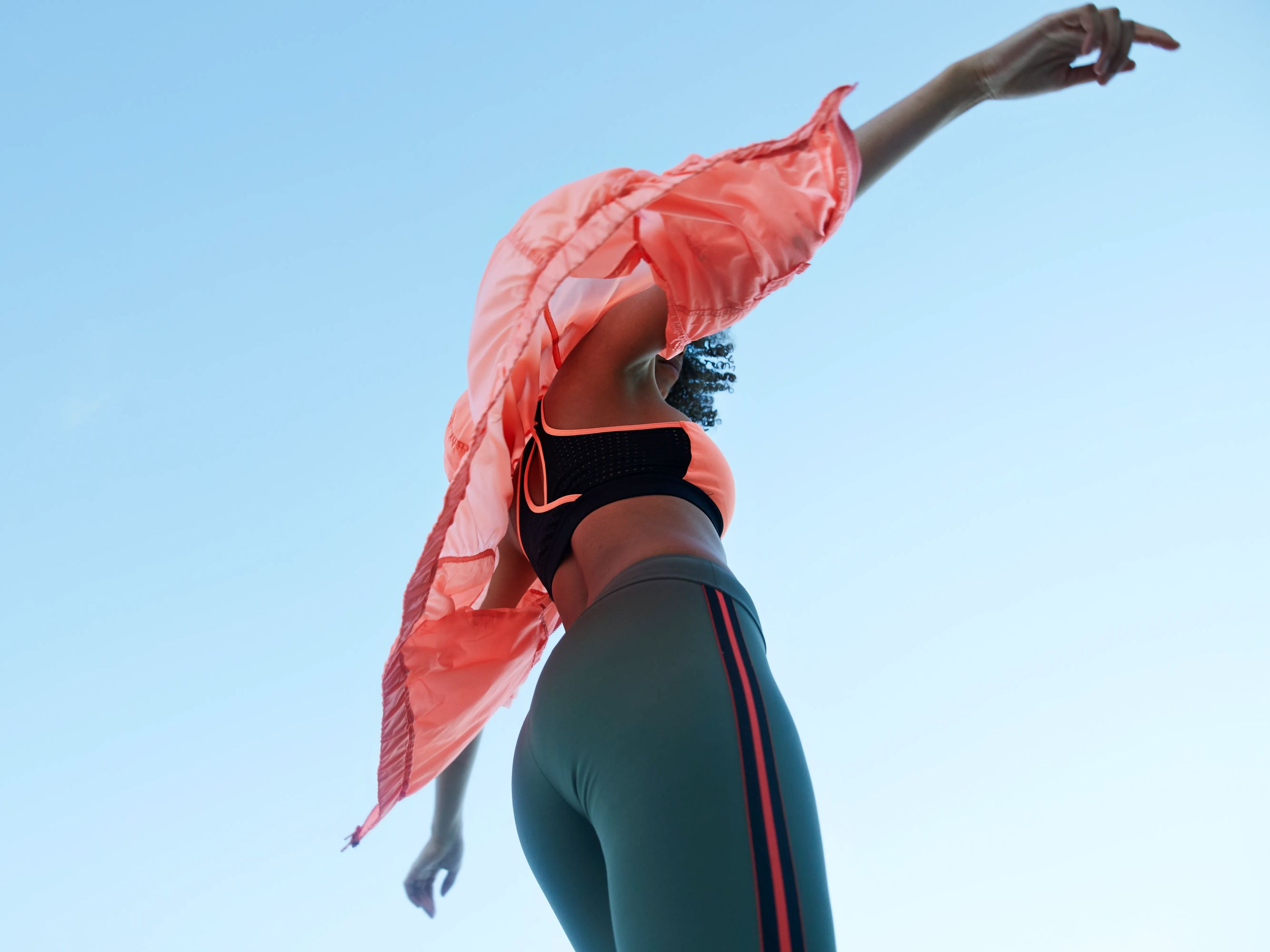

Types
What Material Is Good For Workout Clothes
Modified: January 2, 2024
Discover the best types of workout clothes made from high-quality materials for a comfortable and stylish fitness experience.
Introduction
When it comes to workout clothes, selecting the right material is crucial for both comfort and performance. The fabric you choose can make a significant difference in how you feel during your workout, as well as how your clothes hold up over time. With a wide variety of materials available, it can be overwhelming to know which one to choose.
From cotton to synthetic fabrics like polyester and nylon, each material has its own benefits and drawbacks. Additionally, specialized fabrics like spandex/lycra and moisture-wicking fabrics have gained popularity in the fitness industry for their unique properties. Understanding the characteristics of different materials can help you make an informed decision when shopping for workout clothes.
In this article, we will explore various fabric options for workout clothes and discuss their pros and cons. We will delve into factors such as moisture-wicking capability, breathability, stretchability, and durability, to help you find the ideal material for your workout needs.
Cotton
Cotton is a natural fabric that is widely used in the production of workout clothes. It is known for its softness and breathability, making it a popular choice, particularly for low-intensity workouts and casual exercise. Cotton allows air to circulate and helps to keep your body cool during a workout.
One of the main advantages of cotton is its ability to absorb moisture. It can easily absorb sweat, keeping you dry and comfortable while you exercise. However, one drawback of cotton is that it tends to hold on to moisture, which can lead to the fabric feeling heavy and damp. This can be a disadvantage during high-intensity workouts or hot weather conditions, as the fabric may cling to your skin and cause discomfort.
Furthermore, cotton may not be the best choice for activities that require a lot of movement and stretching. It has limited elasticity and may not provide the necessary support for dynamic exercises. Cotton garments also tend to lose their shape and stretch out over time, which can impact their durability.
Despite its limitations, cotton remains a popular choice for workout clothes due to its softness and comfort. It is ideal for less intense workouts or activities such as yoga or Pilates, where breathability and freedom of movement are essential.
Synthetic Fabrics
In recent years, synthetic fabrics have gained popularity in the world of workout clothes due to their advanced performance properties. These fabrics are engineered to provide enhanced moisture-wicking capabilities, breathability, and durability.
Polyester is one of the most commonly used synthetic fabrics in activewear. It is lightweight, quick-drying, and has excellent moisture-wicking properties. Polyester fabrics are designed to draw sweat away from the body, allowing it to evaporate quickly and keeping you feeling dry and comfortable during your workout. Additionally, polyester is known for its durability, as it retains its shape and color even after multiple washes.
Nylon is another popular synthetic fabric used in workout clothing. It is known for its strength, flexibility, and durability. Nylon fabrics are highly resistant to abrasion and tearing, making them ideal for high-intensity workouts and activities that require a lot of movement. They also have good moisture-wicking properties and provide excellent breathability.
Spandex, also known as Lycra or elastane, is a synthetic fiber renowned for its exceptional stretch and recovery properties. It is often blended with other fabrics to provide elasticity and support. Workout clothes containing spandex are known for their snug fit, which allows for a wide range of motion without restricting movement. This makes spandex a popular choice for activities that require flexibility, such as yoga, dance, and aerobics.
When choosing workout clothes made from synthetic fabrics, it is essential to consider their breathability. Many synthetic materials are designed with special ventilation features and mesh panels to improve airflow and prevent overheating during intense workouts. Look for garments with these features to ensure maximum comfort.
In summary, synthetic fabrics offer a range of benefits for workout clothes, including moisture-wicking capability, breathability, and durability. They are particularly suitable for high-intensity workouts and activities that require freedom of movement. The combination of these properties makes them a reliable choice for individuals seeking optimal performance and comfort during their exercise routines.
Polyester
Polyester is a synthetic fabric widely used in workout clothing due to its excellent performance properties. It offers several benefits that make it a popular choice for active individuals.
One of the main advantages of polyester is its moisture-wicking capability. This fabric has the ability to draw moisture away from the skin and onto the surface of the fabric, where it can evaporate quickly. This helps in keeping you cool and dry during intense workouts or in hot weather conditions.
Another key feature of polyester is its quick-drying nature. It does not absorb moisture like cotton, allowing sweat to evaporate rapidly. This helps in preventing the feeling of dampness and discomfort during and after your workout session.
Polyester is also known for its durability. It is a tough and resilient fabric that withstands wear and tear even after repeated use and washing. This makes polyester workout clothes long-lasting and capable of retaining their shape and color over time.
In addition to its performance properties, polyester is also lightweight and breathable. It allows air to circulate, keeping you comfortable and well-ventilated throughout your workout.
One potential drawback of polyester is its lack of natural fiber characteristics. Some individuals may find it less comfortable compared to natural fabrics like cotton. However, advancements in fabric technology have led to the creation of blended materials that combine the benefits of polyester with the softness and breathability of natural fibers.
Overall, polyester is an excellent choice for workout clothing due to its moisture-wicking, quick-drying, and durable properties. It is particularly suitable for individuals engaged in high-intensity workouts or activities that result in heavy sweating. With proper care, polyester workout clothes can provide comfort and performance for a long time.
Nylon
Nylon is a synthetic fabric that is widely used in the production of workout clothes due to its exceptional performance properties. It offers several advantages that make it a popular choice among active individuals.
One of the main benefits of nylon is its strength and durability. It is a robust fabric that is resistant to abrasion and tearing, making it ideal for high-intensity workouts and activities that involve a lot of movement and friction. Nylon workout clothes can withstand rigorous use and maintain their integrity even after multiple washes.
In addition to its durability, nylon is also known for its excellent moisture-wicking properties. It has the ability to pull sweat away from the skin and allow it to evaporate quickly, keeping you dry and comfortable during your workouts. This feature is particularly important for individuals engaged in vigorous exercises or those who sweat heavily.
Nylon is also lightweight and breathable, allowing for optimal airflow and ventilation. It helps in regulating body temperature and preventing overheating during intense physical activities. The breathability of nylon fabric adds to the overall comfort of your workout experience.
One potential drawback of nylon is that it may not be as soft as some natural fabrics like cotton. However, advancements in fabric technology have led to the creation of blended materials that incorporate nylon with other fibers to enhance softness and comfort.
Furthermore, nylon is quick-drying, which means it does not retain moisture and keeps you dry even during strenuous workouts. This fast-drying property makes nylon workout clothes a practical choice for individuals who prefer minimal downtime between workout sessions.
In summary, nylon is a versatile fabric that offers durability, moisture-wicking capabilities, breathability, and quick-drying properties. It is an ideal choice for individuals looking for workout clothes that can withstand intense activities while providing comfort and performance.
Spandex/Lycra
Spandex, also known as Lycra or elastane, is a synthetic fabric that is highly popular in the production of workout clothes. It is renowned for its exceptional stretch and recovery properties, making it an essential component in activewear.
One of the main advantages of spandex is its incredible elasticity. It can stretch up to 500% of its original size and then return to its original shape without losing its integrity. This exceptional stretchability allows for a wide range of motion and flexibility during workouts, making it ideal for activities that require dynamic movements like yoga, dance, and aerobics.
In addition to its stretch, spandex provides excellent support. It hugs your body, providing a snug fit that enhances your performance and allows for a full range of motion. The compression effect of spandex can also help improve blood circulation and reduce muscle fatigue during exercise.
Spandex is also lightweight and breathable, allowing for proper ventilation and airflow to keep you cool and comfortable during your workout. It helps wick away moisture from your skin, preventing the fabric from feeling damp. This moisture-wicking capability contributes to a more comfortable and enjoyable exercise experience.
Furthermore, spandex has excellent shape retention, meaning that it retains its shape even after repeated wear and washing. This durability makes spandex workout clothes long-lasting and prevents them from stretching out or losing their fit over time.
One thing to note is that spandex is often blended with other fabrics like polyester or nylon to create a comfortable and functional fabric for workout clothes. This blend combines the stretch and support of spandex with the durability and moisture-wicking capabilities of other materials.
In summary, spandex is an essential fabric for workout clothes, providing exceptional stretch, support, and durability. Its ability to enhance flexibility, maintain its shape, and keep you cool and comfortable make it an ideal choice for various physical activities. Whether you’re engaged in yoga, dance, or other dynamic exercises, spandex workout clothes can help optimize your performance and overall workout experience.
Moisture-wicking Fabric
Moisture-wicking fabric is a specialized type of fabric designed to draw moisture away from the skin and towards the outer surface of the fabric, where it can evaporate quickly. It is commonly used in workout clothes to help keep you dry and comfortable during exercise.
The main advantage of moisture-wicking fabric is its ability to efficiently manage sweat. When you workout, your body produces sweat to cool itself down. Moisture-wicking fabric pulls sweat away from your skin and transports it to the outer layer of the fabric. This allows the sweat to evaporate more easily, preventing the fabric from becoming wet and heavy. As a result, you stay drier and more comfortable throughout your workout.
Moisture-wicking fabric is typically made from synthetic materials, such as polyester or nylon. These materials are hydrophobic, meaning they repel water and have excellent moisture-wicking properties. They quickly move moisture away from your body, preventing the accumulation of sweat that can lead to discomfort and chafing.
In addition to keeping you dry, moisture-wicking fabric also helps regulate your body temperature. As sweat evaporates from the fabric, it cools your skin, keeping you more comfortable during intense workouts or in hot weather conditions.
An important benefit of moisture-wicking fabric is its quick-drying nature. Once the moisture is pulled away from your skin and onto the surface of the fabric, it evaporates more rapidly compared to fabrics that absorb and hold moisture, such as cotton. This means that moisture-wicking clothes dry faster after washing, reducing the time you have to wait before wearing them again.
Moisture-wicking fabric is particularly beneficial for intense workouts, outdoor activities, and individuals who sweat heavily. It helps you stay cool, dry, and comfortable, preventing skin irritation and enhancing your overall workout experience.
Keep in mind that although moisture-wicking fabric is designed to manage sweat efficiently, it is still essential to choose appropriate workout clothes for the level of intensity and weather conditions. Proper ventilation, breathability, and the right blend of fabrics can further enhance the performance of moisture-wicking fabric.
In summary, moisture-wicking fabric plays a crucial role in workout clothes by effectively managing sweat, keeping you dry and comfortable during physical activity. Its ability to regulate body temperature and quick drying properties make it an excellent choice for individuals engaged in intense workouts or those who sweat heavily.
Breathable Fabric
Breathable fabric is a key consideration when choosing workout clothes. It refers to fabrics that allow air to flow freely through the material, enhancing ventilation and keeping you cool and comfortable during exercise.
One of the main advantages of breathable fabric is its ability to regulate body temperature. As you work out, your body generates heat, and sweat is produced to cool you down. Breathable fabrics allow the heat and moisture to escape from your body, preventing overheating and excessive sweating. This helps maintain a comfortable body temperature throughout your workout.
Typically, breathable fabrics are woven or knitted in a way that creates small pores or gaps within the material. These pores allow air to circulate, facilitating the evaporation of sweat and providing superior breathability.
Materials such as cotton, linen, and certain synthetic fibers like polyester and nylon are known for their breathability. Cotton, for example, is a natural fabric that allows air to flow through the fibers easily. It is often used in lightweight workout clothes, providing a comfortable and breathable option for low-intensity activities.
Synthetic fabrics like polyester and nylon can also offer good breathability. They are often designed with moisture-wicking properties and advanced knitting or weaving techniques that promote airflow. Specialized ventilation features, such as mesh panels or perforations, are often added to these fabrics to enhance breathability.
In addition to keeping you cool, breathable fabrics also help prevent the buildup of moisture and odors. By allowing air to circulate, they reduce the chances of sweat lingering on your skin or in the fabric, keeping you feeling fresh during and after your workout.
When shopping for workout clothes, look for garments labeled as “breathable” or “ventilated.” These will have features designed to enhance airflow and keep you comfortable throughout your exercise routine.
It is important to note that breathable fabric alone may not be sufficient in high-intensity or hot weather conditions. Proper ventilation, moisture-wicking capabilities, and other factors should also be considered when selecting workout clothes to ensure optimal comfort and performance.
In summary, breathable fabric is essential for workout clothes as it allows air to flow through the material, promoting ventilation and helping to regulate body temperature. Fabrics like cotton, polyester, and nylon can provide excellent breathability, keeping you cool and comfortable during exercise. When combined with other performance features, breathable fabric contributes to an overall enjoyable and productive workout experience.
Stretchability
Stretchability is a crucial factor to consider when choosing workout clothes, as it directly affects your freedom of movement and overall comfort during exercise. Fabrics with good stretchability allow for a full range of motion, ensuring that your clothing moves with you as you perform various exercises.
One of the most common materials known for its stretchability is spandex, also referred to as Lycra or elastane. Spandex is a synthetic fiber that can stretch up to 500% of its original size and then return to its initial shape without losing its integrity. This exceptional stretch makes spandex an ideal fabric for workout clothes, especially for activities that require flexibility and agility, such as yoga, Pilates, and dance.
In addition to spandex, many workout clothes incorporate blends of different materials to achieve optimal stretchability. For example, a blend of polyester and spandex can offer both the moisture-wicking properties of polyester and the stretchiness of spandex. This combination allows for a comfortable yet supportive fit during a wide range of exercises.
Stretchability in workout clothes is important because it allows you to move freely and comfortably without restrictions or discomfort. Whether you’re stretching, reaching, or performing dynamic movements, having clothing that stretches with your body helps prevent any limitations or hindrances to your workout performance.
It is worth noting that while stretchy fabrics are beneficial, they should also provide adequate support. The right amount of elasticity allows the fabric to conform to your body shape without becoming baggy or loose, providing a secure fit that enhances your performance.
Another factor to consider regarding stretchability is the recovery of the fabric. After stretching, the fabric should be able to return to its original shape rather than becoming stretched out or saggy. Fabrics with good recovery properties retain their shape even after repeated stretching, ensuring the longevity and durability of your workout clothes.
In summary, stretchability is a vital aspect of workout clothes, as it enables freedom of movement and flexibility during exercises. Fabrics like spandex and blends incorporating elastic materials provide the necessary stretch and support, allowing you to perform your workouts with comfort and confidence.
Durability
Durability is an essential consideration when choosing workout clothes, as they need to withstand the demands of your exercise routine and frequent washing. High-quality, durable fabrics ensure that your workout clothes last longer, maintaining their performance and appearance over time.
One of the most durable materials commonly used in workout clothes is polyester. It is a strong and resilient fabric that resists wear and tear, making it suitable for intense workouts and activities that involve constant movement. Polyester fabrics retain their shape, color, and structural integrity even after multiple washes, ensuring long-lasting performance.
Nylon is another fabric known for its durability. It is able to withstand abrasion and tearing, making it suitable for high-intensity workouts and vigorous activities. Nylon workout clothes are designed to be long-lasting, ensuring that they remain functional and reliable throughout your fitness journey.
When considering the durability of workout clothes, it is important to pay attention to the quality of construction. Strong and reinforced seams, sturdy stitching, and well-constructed hems contribute to the overall durability of the garment. Poorly constructed workout clothes are more likely to experience fraying, unraveling, or seam breakage, which can affect their longevity.
It is also worth noting that the care and maintenance of your workout clothes can play a role in their durability. Following the care instructions provided by the manufacturer, such as washing in cold water and avoiding harsh chemicals or bleach, can help preserve the fabric’s integrity and extend the lifespan of your workout clothes.
Another factor that can impact the durability of workout clothes is the frequency and intensity of your workouts. Regularly engaging in high-impact or vigorous activities may subject the fabric to more stress, potentially reducing its lifespan. However, choosing workout clothes made from durable materials and treating them with care can help mitigate these factors.
Lastly, it is important to periodically assess the condition of your workout clothes. If you notice signs of excessive wear, such as thinning fabric, stretching, or loss of elasticity, it may be time to replace them. Investing in durable workout clothes ensures that you can continue to perform at your best without worrying about the quality and integrity of your garments.
In summary, choosing workout clothes made from durable materials like polyester and nylon, along with paying attention to construction quality and proper maintenance, ensures that your activewear withstands the rigors of exercise and provides long-lasting performance. Prioritizing durability in your workout clothing selection will help you maintain a functional and reliable fitness wardrobe.
Conclusion
Choosing the right material for your workout clothes is crucial for both comfort and performance. Understanding the characteristics of different fabrics allows you to make an informed decision that suits your exercise needs and preferences.
Cotton, with its softness and breathability, is a popular choice for less intense workouts or activities that prioritize comfort. However, it may not provide adequate moisture-wicking and stretchability for more intense exercises.
Synthetic fabrics like polyester and nylon offer excellent moisture-wicking capabilities, durability, and breathability. These materials are ideal for high-intensity workouts and activities that require a wide range of motion.
Spandex, also known as Lycra or elastane, provides exceptional stretchability and support, making it a favorite for dynamic exercises like yoga and dance.
Specialized fabrics such as moisture-wicking and breathable fabrics further enhance the performance of workout clothes. Moisture-wicking fabrics, often made from synthetic materials, help manage sweat and keep you dry, while breathable fabrics improve ventilation and regulate body temperature.
Stretchability is essential for unrestricted movement during workouts, with spandex and elastic blends offering optimal flexibility and support.
Lastly, durability ensures that your workout clothes can withstand the demands of your fitness routine and endure frequent washing. Fabrics like polyester and nylon, along with high-quality construction, contribute to the longevity of your activewear.
By considering these factors and finding the right balance of properties, you can choose workout clothes that enhance your comfort, performance, and overall enjoyment of physical activity.
